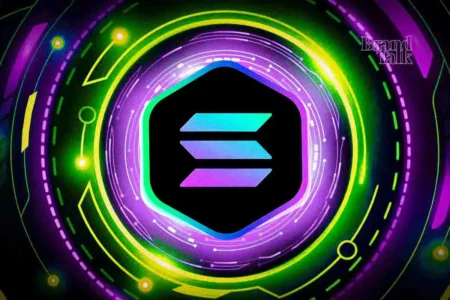The Collapse of the Arbitrum-Nvidia Partnership: What It Means for the Crypto Landscape
The recent breakdown of the partnership between Arbitrum and Nvidia has generated significant buzz within both the crypto and tech communities. Initially poised to transform the Layer-2 network’s role in the AI space, the collaboration was expected to anchor Arbitrum as the primary blockchain for AI projects benefiting from Nvidia’s Ignition AI Accelerator program. However, the partnership has quickly unraveled, revealing complexities in aligning traditional tech with the rapidly evolving Web3 ecosystem. Here we explore the factors contributing to this unexpected turn of events and its implications for the future of decentralized technologies.
The Intentions Behind the Collaboration
The Ignition AI Accelerator program, launched in May 2024, was designed to provide comprehensive support to high-potential AI startups. By integrating with this program, Arbitrum aimed to foster innovative decentralized infrastructure in collaboration with cutting-edge AI technologies. The partnership was initially viewed as a landmark collaboration, merging the strengths of blockchain scalability with advanced AI solutions. However, the partnership’s collapse raises questions about the feasibility of traditional tech giants effectively engaging with decentralized enterprises.
Clarifications and Misconceptions
A recent press release from Nvidia clarified that the breakdown was not due to any action from their side but was rather a request from the Arbitrum Foundation to withdraw from the collaboration. This revelation highlights that there was never a direct partnership between Nvidia and Arbitrum—rather, it was a proposed collaboration with the Ignition Accelerator program. The eligibility criteria for participation emphasize that certain types of projects, including cryptocurrency or blockchain-only ventures, were excluded from application. This clarification adds a layer of complexity to why Arbitrum may have opted out, highlighting the ongoing friction between centralized and decentralized approaches within the tech landscape.
Market Reactions
The immediate fallout from the partnership’s collapse was notable, with Arbitrum’s token (ARB) briefly declining by 2.77%, settling around $0.3436. However, within 24 hours, the token exhibited resilience, rallying roughly 5% as traders speculated on Arbitrum’s potential to pivot toward alternative partnerships. In stark contrast, the broader crypto market remained relatively stable, with Ethereum trading around $1,810 despite concerns over potential whale activity causing market fluctuations. This divergence demonstrates that while the incident affected Arbitrum directly, it also spurred interest in smaller AI-focused crypto projects like Fetch.ai and Ocean Protocol.
A Broader Critical Reflection
The Arbitrum and Nvidia partnership dissolution highlights critical challenges within the Web3 ecosystem. While collaborations with established corporate players can present lucrative opportunities, they also risk compromising the core tenets of decentralization and autonomy that underpin the Web3 ethos. As Arbitrum withdraws from the Nvidia partnership, it raises essential questions: Can decentralized infrastructures thrive without relying on alliances with centralized tech giants? Many advocates assert that the future of decentralized AI technology should be rooted in community-driven, open-source development rather than corporate interests.
Future of Decentralized Collaborations
This incident serves as a poignant reminder of the ongoing evolution within the crypto and tech sectors. As the Web3 landscape matures, it must navigate the complexities inherent in partnerships with large corporations that may not fully embrace or understand the decentralized paradigm. The challenge lies in creating synergies that respect the values of both worlds while fostering innovation. Moving forward, organizations in the Web3 space may benefit from cultivating collaborations that prioritize mutual goals and values, thus paving the way for sustainable growth.
Conclusion
The collapse of the Arbitrum-Nvidia partnership is more than just a setback; it reflects the inherent tensions between traditional tech giants and the emerging Web3 ecosystem. As both sectors continue to evolve, the lessons learned from this experience will prove invaluable. Future collaborations must strive for alignment in vision and values to foster innovation that respects the principles of decentralization. The ongoing dialogue around these themes can guide the development of resilient, community-driven technologies that effectively bridge the gap between established and emerging digital landscapes.
Disclaimer: This article reflects the author’s views and is subject to change based on market conditions. Readers are encouraged to conduct their own research before making any investment decisions in cryptocurrencies. The author and publication disclaim any responsibility for personal financial losses.

















